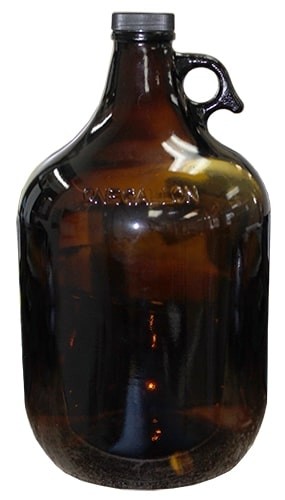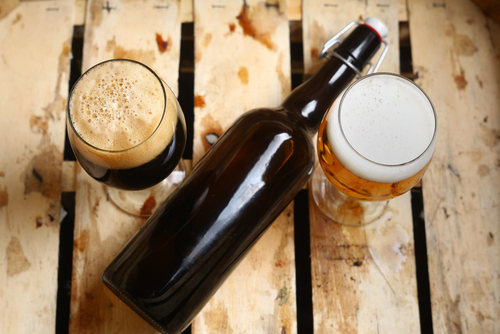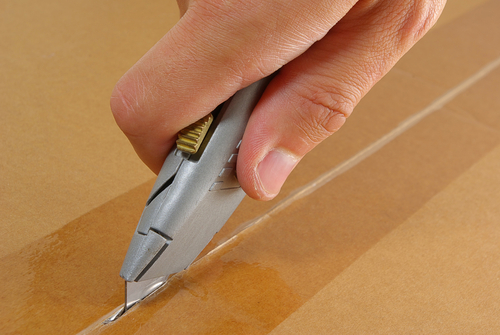At AirSea Containers, our amber glass bottles and jugs are highly popular for all kinds of applications. You might find them holding someone’s new India Pale Ale or an herbal concoction sure to soothe a sore throat.
Why is this beautiful brown glass almost everywhere, and how does it acquire its key properties? And what are its most common uses? We’ll do a quick dive into the unique processes used to create amber glass, as well as how it helps preserve everything from beer to medicines.
How Amber Glass is Made
To understand the unique properties of amber glass, it’s helpful to know the fundamentals of how glass is made. At its most basic level, glass is the liquefied form of sand, heated and poured into a shape. The basic process goes like this:
- A mixture of sand, soda ash and limestone is heated to a very high temperature.
- While the mixture is molten, other materials are added to give it different colors and properties.
- Workers and machines shape and mold the liquid glass into a bottle, cup or any other form.
- When the glass cools, it hardens in its new shape.
Amber glass is the result of adding iron, sulfur and carbon to the molten mixture. These elements give amber glass its iconic color — a rich, deep umber that, for many people, brings to mind a tasty brew of some kind. There’s a reason for that, and it involves the way amber glass protects its contents from light.

The Many Benefits of Amber Glass Containers
Several of the benefits of amber glass are common to glass of all types. These include:
- Glass is almost completely inert, so it doesn’t break down or leach chemicals into whatever it’s storing.
- Since it’s made from widely available materials, glass is relatively inexpensive.
- Glass can be easily strengthened by using techniques like tempering and by the addition of various metals and minerals during manufacturing.
- Glass loses heat less quickly than metal does. Thus, for a beverage that you want to keep cold as long as possible, glass is often the superior choice.
Amber glass, however, interacts with light in some unique ways that make it extremely useful:
- Like some other types, amber glass completely blocks UV light.
- However, unlike these others, it also blocks blue light and all other light wavelengths under 450 nm. This makes it ideal for storing light-sensitive products.
In addition to these practical qualities, amber glass is renowned for its gorgeous color and classic appeal. Anywhere that designers and decorators strive to find the balance between the rustic and the contemporary, you’ll likely find amber glass.
But what are the everyday uses that have created that aesthetic appeal? You’ll still find amber glass in use today in a wide variety of ways. How are people continuing to use this beautiful and practical material?
Common Uses of Amber Glass
Due to its light-resistant properties, amber glass is ideal for storing products with unique chemical compositions that need to be protected from photooxidation. From brewing to pharmaceuticals, amber glass is the perfect barrier between the world and your delicate product. A few of its most common uses include:
- You probably associate amber glass, particularly amber glass jugs, with beer, and that’s not a coincidence. Beer is highly vulnerable to light; photooxidation breaks down the beer’s key components and transforms them into a compound called MBT, which produces the “skunked” taste common to spoiled beer. Thus, the light-filtering properties of amber glass make it an ideal choice for beer storage.
- Essential oils are another substance frequently stored in amber glass. These oils are prized for their unique scents, and photooxidation can produce reactions that change their character. For the same reason, you’ll often find culinary flavorings like vanilla extract stored in amber glass. Storing oils in plastic is also not a good idea, as some will break down plastic compounds, leading to leaching. Amber glass is both protective and inert, making it perfect for essential oils.
- Amber glass is also key for protecting some pharmaceuticals. Long ago, apothecaries and pharmacies stored most of their products in small amber glass vials. Antibiotics, eye drops and various tinctures all came in amber glass bottles until recently. Although some of these drugs are now packaged in plastic bottles, amber glass remains in use in many cases, particularly amid concerns about chemical leaching from plastic bottles. This is why it’s also widely used to store home remedies.

We’re proud to say that AirSea Containers has a packaging solution for almost anything you want to ship or store. Our amber glass bottles and jugs feature leak-proof caps and are crafted from high-quality glass to keep your product pure and fresh. For our home brewing customers and many others, these jugs have been a staple for many years — and we think they’ll continue to be for a long time to come.
Browse Our Collection of Glass Bottles and Jugs










